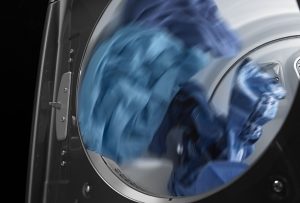1. The Dryer Vent is Clogged
This is a common cause of a dryer that will not heat to dry your clothes. To check if this is the problem, start a timed dry cycle using the high heat setting. Go to the exhaust vent; it’s located outside and you can place your hand over it. If you can feel warm air exiting the exhaust, but the airflow is low it’s likely that the venting needs to be cleaned or replaced. If the temperature is colder, there may be an underlying problem that should be investigated by a repair specialist.
2. Uneven Drying Loads
If you mix small and large items together, this may be the cause of the problem. It’s important to wash and dry similar loads to ensure that they finish washing and drying at approximately the same time. Putting together thin sheets and thick towels may cause the dryer to heat to lover levels and it may even shut off entirely. The dryer will “believe” that the items are dried, but the heavier items may still be damp.
3. The Clothes are Too Wet
The problem may not lie in the dryer at all, the cause may be the washer instead. If the washer is not draining or spinning prosperity, there will be too much water in the fabrics. This will make the drying task much harder or even impossible for the dryer to tackle.
4. A Lack of Power
All dryers need a supply of electricity or gas to dry the clothes efficiently. Dryers receive electrical power from a 240-volt circuit which in turn is supplied with a pair of 120-volt lines. If one of these power lines fails, there will be insufficient power. Although the dryer may run, it will not heat up sufficiently to dry the load. If gas is connected, the dryer cannot heat up if the gas line is turned off. These two issues are beyond the skills of a DIY enthusiast and they should be checked out by a professional.
5. A Clogged Lint Screen
If the lint screen is dirty or clogged, the airflow will be reduced and this will prevent drying. It’s important to keep the lint screen clean, it can be soaked with warm water and dish soap to clean it thoroughly. If some debris remains, use an old soft toothbrush to gently scrub the surface clean. If the lint screen is dry, vacuum it regularly to keep the surface clean and to promote proper airflow.
In Conclusion
As you can see, it is possible to troubleshoot, fix, and even prevent many dryer issues before they develop into larger problems. But, there are times when you need to contact a repair specialist to perform preventative maintenance or fix these problems for you. If you lack the skills to work on electrical equipment and gas lines, it’s easy to make the problem worse. In extreme cases, this may lead to an expensive repair bill or an earlier than expected dryer replacement.
If your dryer isn’t delivering the best performance, be sure to speak to a home appliance repair specialist, who can help you to get the best functionality out of your appliance.
